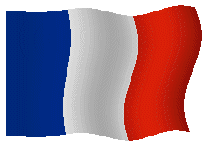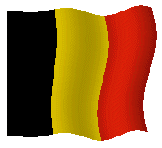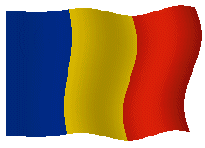













![]()







![]()






ALADIN Newsletter 27
July- December 2004
Copyright: © ALADIN 2005
Scientific editor: Dominique GIARD
Layout & Linguistic Editor: J-A MAZIEJEWSKI
WEB Master: Patricia POTTIER & J-D GRIL
1.1.EVENTS
1.2.ANNOUNCEMENTS
1.3.ALADIN 2
2.1.An overview of operational ALADIN applications January 2005
2.2.Changes in the Operational Version of ARPEGE
2.3 to 2.16 In each center
3.1to 3.14.In each center
4.1.Incrementality deficiency in ARPEGE 4d-var assimilation scheme: Radi Ajjaji.
4.4.Further improvement of a simplified 2d variational soil water analysis: Karim Bergaoui.
4.5.Evaluation of assimilation cycles in a mesoscale limited area model: Vincent Guidard.
4.7.Extensive study of the coupling problem for a high-resolution limited-area model: Raluca Radu.
4.10.Systematic qualitative evaluation of high-resolution non-hydrostatic model: Klaus Staldbacher.
4.12.Use of IASI/AIRS observations over land: Małgorzata Szczech-Gajewska.
4.13.Application of the predictor-corrector method to non-hydrostatic dynamics: Jozef Vivoda.
5.2. Use of geostationnary SEVIRI radiances in ALADIN 3D-VAR: Montmerle Th.
5.3.Case of extreme wind occurrence at High Tatras on 19th November 2004: Vivoda J. & A. Simon.
5.6.Latest results of the LAMEPS experiments: Hágel E.
5.7.The HIRALD setup: Sass B. H. , K. Lindberg & B. S. Andersen.
5.8.Spline interpolation in semi-Lagrangian advection scheme of ALADIN/ARPEGE/IFS: Vaná Filip.
5.9.Impact of observations and tuning of observational error statistics: Chapnik Bernard.
5.10.Adaptations to ALADIN of the Lopez micro-physical package: Gérard Luc.
5.11.VARPACK– A diagnostic Tool, based on the 3DVar/ALADIN surface scheme: Auger L & Taseva L.
5.16.GRIBEX introduction in FA files: D. Paradis and J. Clochard.
Experience has shown that the rather strict deadlines fixed last summer (22/07 and 22/01) were too stringent. Many papers, including mandatory ones (reports on operations and research for each centre), cannot be ready in time. And some papers sent, suffer from hasty writing, bringing even more work to the editorial team.
As a consequence, the next deadlines will be fixed for the end July and the end of January respectively, there are nicest ways to celebrate JAM's birthday! And please, do use the (updated) style sheets and proof read your contribution before sending them to the editorial team (JAM and DG).
A new tool, made for openoffice, which you can use to write equations and formulæ can be found on: http://www.dmaths.com/
|
Practical English |
Le français Pratique |
|
To carry a torch for someone |
Avoir un faible pour quelqu'un |
|
To get on like a house on fire |
S'entendre à merveille |
|
To look daggers at someone |
Foudroyer quelqu'un du regard |
|
To let one's hair down |
Se détendre |
|
To paint the town red |
Faire la fête |
|
To be out on the tiles |
Sortir faire la bringue |
|
To be on cloud nine |
Être aux anges |
|
To be down in the mouth |
Être déprimé |
|
To be in the doldrums |
Avoir le moral à zéro |
|
To go off at the deep end |
Piquer une crise |
|
To go ballistic |
Piquer une crise |
|
To be at the end of one's tether |
Être à bout |
|
To be like a bear with a sore head |
Être d'humeur massacrante |
|
To haul someone over the coals |
Démolir quelqu'un en le critiquant |
|
The pot calling the kettle back |
L'hôpital qui se moque de la charité |
|
To pick holes in something |
Relever des erreurs dans quelque chose |
|
To get a rollicking |
Se faire engueuler |
|
To have someone's guts for garters |
Massacrer quelqu'un |
|
To brick it |
Avoir les jetons |
|
To get the wind up |
Avoir une peur bleue |
|
To be in bed with someone |
Être allié avec quelqu'un de façon officieuse |
|
To stick one's oar in |
Mettre son grain de sel |
|
To sell someone down the river |
Trahir/vendre quelqu'un |
|
To be long in the tooth |
Ne plus être tout jeune |
|
To be up the pole |
Être timbré |
|
To bend over backward |
Se mettre en quatre |
|
To give someone a leg up |
Donner un coup de pouce à quelqu'un |
|
To pull somebody's leg |
Faire marcher quelqu'un |
|
To look like death warmed up |
Avoir une mine de déterré |
|
To laugh all the way to the bank |
S'en mettre plain les poches |
|
To cost an arm and a leg |
Coûter les yeux de la tête |
|
To push the boat out |
Ne pas regarder à la dépense |
|
To go Dutch |
Payer chacun sa part |
|
To take someone to the cleaners |
Plumer quelqu'un |
|
To wet one's whistle |
Se rincer le gosier |
|
On a wing and a prayer |
Dieu sait comment |
|
To go out on a limb |
Prendre des risques |
|
To be in a rut |
Être enlisé dans la routine |
|
It's a different kettle of fish |
C'est une autre affaire |
|
To be like chalk and cheese |
C'est le jour et la nuit |
|
The penny's dropped |
Çà y est! J'ai compris |
|
To put out feelers |
Tâter le terrain |
|
To hear something on the grapevine |
Apprendre quelque chose par le téléphone arabe |
|
To hear something from the horse's mouth |
Apprendre quelque chose de source sûre |
|
To grasp the nettle |
Prendre le taureau par les cornes |
|
To shoot the breeze |
Bavarder |
|
To bend someone's ear |
Pomper l'air à quelqu'un |
|
To talk through one's hat |
Parler à tord et à travers |
|
To be all mouth and no trousers |
Être une grande gueule |
|
To bust a gut |
Se donner un mal de chien |
|
To go through the mill |
En baver |
|
A hard nut to crack |
Un problème difficile à résoudre |
|
A hot potato |
Un sujet délicat |
|
To play the field |
Papillonner |
|
To have been left on the shelf |
En passe de devenir vieille fille |
|
To go up the wall |
Se fâcher tout rouge |
Some books I read and what I thought of them.
The diary of Thomas Turner 1754-1765: edited by David Vaisey.
This diary chronicles the daily life of a Sussex shopkeeper in mid-eighteenth century. It begin in 1754 , Thomas Turner then aged 25, and end on the eve of his second marriage. Besides being a multipurpose shopkeeper, Thomas Turner was also a pillar of the community for, for many years, he was either parish officer, churchwarden, overseer of the poor, surveyor of the highway or collector of the window and land taxes.
Well written, it is worth reading as it gives an inside glimpse of the life of ordinary men and women, the hardship for a shopkeeper to get its money, the trading practices of the time, the after Christmas revelling, eating and much drinking, quarrelling with an obstreperous wife and mother in law, and much more besides, in short with life and death.
The Wench is dead :Colin DEXTER
A century old whodunit brilliantly solved by bed ridden Chief Inspector Morse recovering at the JR2 from a perforated ulcer and amid tantalizing nurses and for a one night bed fellow Lowland Sister.
Morse suspects foul play, when, back in the 1850s, three boat men are convicted then hanged for the murder of Joanna Frank, despite their claim to innocence. After much thinking and a nil by mouth diet, Morse proceeds to unravel the swindle enacted by Joanna Frank and her con-man husband.
Julia de Roubigné: Henry McKenzie
Julia and destitute Savillon are brought up together by Julia's parents, and, years later and unknown to each other, they fall in love. Then, Savillon leaves France for Martinique to join a rich childless relative.
In the meantime, Julia's father goes near bankrupt and unexpectedly, Julia's mother dies. Julia's is compelled to marry M. Montauban, a rich neighbour who paid the young woman's haughty father's debts. Lack of communication between husband and wife together with Julia's sentimentality daydreaming about her faraway bosom friend leads to sudden jealousy from Montauban deludes himself of being wronged and then proceeds to poison his young wife and to commit suicide
This epistolary novel, written by the the author of the most famed Man of feeling is more concerned with the unruly feelings of the protagonists than with plot. Best left to oblivion, though, one will find a nice passage against slavery, well in advance of its time. In a way, Julia de Roubigné prefigures the novels of, say, Henry James.
The diary of a Cotswold Parson
A biased selection of what must have otherwise been an interesting account of early nineteenth century life. To be read by those interested by landscape, countryside and architecture, otherwise, can be happily discarded.
Lor' luv a duck!
(more details joel.stein@meteo.fr)
(more details thomas.haiden@zamg.ac.at)
There have been no changes in the operational ALADIN system (CY25) at ZAMG since the last Newsletter.
(more details olivier.latinne@oma.be)
For the operational aspects of ALADIN forecasts, these last months, we have encountered many problems with our SGI ORIGIN 3400 system. Under some specific circumstances, when running ALADIN, a general crash of the machine occurs. This very tricky bug is located in the general SGI-IRIX kernel and seems related to the "large page" option which allows to accelerate ALADIN execution by about 15 %. Up to 12 kernel-cores have been made with a close SGI collaboration, without successfully pinpoint the exact problem.
We also plan to switch to cycle 28T3 soon, in March 2005.
(more details andrey.bogatchev@meteo.bg)
No change along the last months, upgrade scheduled for spring 2005.
(more details tudor@cirus.dhz.hr,ivateks@cirus.dhz.hr)
(more details filip.vana@chmi.cz )
(more details joel.stein@meteo.fr)
Similar changes as in ARPEGE along the last months.
(more details kertesz.s@met.hu)
As before our main areas of interest are data assimilation (3D-Var) and short-range ensemble prediction.
The brief summary of events can be presented as follows :
The application of new data types of the 3D-Var scheme was continued with the tests carried out with AMDAR, wind profiler, SATOB and AMSU-B data. Most of the progress was concentrating on the development and improvement of data thinning algorithms for AMDAR data (a summary of results will be presented in the next Newsletter). The use of wind profiler data was assessed and the control of their quality was investigated. SATOB winds (cloud-motion winds) were computed from METEOSAT-8 (MSG) data and used in the data ingest procedure of 3D-Var. First trials were also taken by the pre-processing of AMSU-B data. It is hoped that all these developments together with some algorithmic improvements will lead to an overall improvement of the performance of the 3D-Var data assimilation scheme.
Regarding our LAMEPS research and development we have further studied the sensitivity of global singular-vector computations with respect to the target domain and target-time interval (a report from Edit Hágel can be read in the present Newsletter).
In October-November, Miklos Voros spent 6 weeks at CHMI (Prague) to get familiar with ALADIN-NH. The original topic proposed by Filip Vana was the correct definition of the bottom boundary condition (BBC) in order to eliminate chimney formation. Miklos had to prepare the ALPIA quasi-academic case to be a test-bed for the investigations. ALPIA, with its detailed orography but simplified atmosphere, represents a step between academic cases (e.g. a single Bell-shape mountain, and uniform flow) and real case studies with realistic terrain and flows. On this testbed he was to study the effects of the semi-Lagrangian horizontal diffusion (SLHD) on the chimney effect. Finally, given the opportunity he had to test the interaction of gravity-wave-drag (GWD) parameterization and SLHD. His work is yet unfinished and he will continue the job from Budapest.
The dynamical downscaling of ECMWF ERA40 data was pursued on order to compute local wind climatology over Hungary. The length of the applied period was 10 years and a two-step downscaling was carried out : first to an intermediate 45 km resolution grid, then to a 15 km mesh, and finally a short dynamical-adaptation post-processing was run at the final 5 km resolution. Wind climatology was computed for 10 m, 25 m 50 m, 75 m, 100 m, 125 m and 150 m heights.
(more details jidane@marocmeteo.ma)
The present status of operational suites is described in the R&D report.
(more details zijerczy@cyf-kr.edu.pl)
Upgrades were not possible due to the limited computing ressources.
(more details manuel.lopes@meteo.pt)
During the second half of 2004 few upgrades have taken place on our operational system. New observation stations have been introduced on the objective verification procedures. Besides, a new chart representation has been introduced under the Metview (ECMWF) batch environment for forecasting purposes.
(more details doina.banciu@meteo.inmh.ro)
In agreement with our colleagues from Bulgaria, the SELAM domain for coupling files were increased from 90×64×37 to 120×90×41 points, keeping the same horizontal resolution.

 Old
coupling domain
New coupling domain
Old
coupling domain
New coupling domain
(more details maria.derkova@shmu.sk, martin.bellus@shmu.sk, jan.masek@shmu.sk, jozef.vivoda@shmu.sk, oldrich.spaniel@shmu.sk)
(more details neva.pristov@rzs-hm.si )
During the second half of 2004 few changes were introduced into the operational suite. Visualization of ARPEGE model on some standard pressure levels based on coupling files data was included. Operational production of products for the PEPS project started in July. Meteorological service from Albania asked for some ALADIN products, so from the end of the year some pictures are made available to them at our ftp server.
The coupling files from the ARPEGE model are transfered only via Internet from Toulouse. In the year 2004 the files were significantly delayed 7 times (1.9%) in the morning (after 4:30 UTC) and 17 times (4.6 %) in the afternoon (after 16:30 UTC). Main reason for delays was slow internet transfer rate; a few times the connection to sirius1 or sirius2 was not possible or files appeared late in the database. The number of cases of missed or delayed products has been decreased in year 2004 (not taking into account the second half of December).
The upgrade of cluster system software was performed in mid-December 2004. The operational system on the computing and master nodes was upgraded from RedHat 7.3 to Fedora core 1 and SCore software (the one which governs the distribution of computing jobs on the cluster) was upgraded from version 5.4 to 5.8. To have the upgrade as smooth as possible the whole procedure was carefully planed, a test cluster with the new version of software was built, but even by executing the procedure unforeseen problems occurred and operational suite was seriously disturbed many times during the 3 week period. However, the problems were solved one by one and the Tuba cluster is again in fully operational status. The main message of the upgrading procedure is the importance of proper cluster file system which has been neglected so far. We are looking now for an alternative to NFS. From now on we expect improved stability of the cluster and even some performance gains due to use of Intel Fortran compilers.
It is planed to upgrade the ALADIN cycle in operational suite as well (from 25T1 to 28T3). Code itself compiled fine but there are still some unresolved problems with xrd library manifesting in configuration ee927. Other configurations run fine. We are still working on the problem and we expect that the new cycle should become operational during mid-February.
We performed different tests on some new architectures (i.e. Opteron64) with different versions of compilers (PG, PathScale, Intel, Lahey) and we have to report that some of the compilers are having problems with the new EGG routines. We are still investigating the problem.
(more details nmiri@meteo.tn)
Significant changes in coupling : see the R&D report.
A new integration for domain ALADIN-BG was created and tested. Its characteristics are as follows :
- coordinates of the centre : 25.5°E, 42.75°N
- south-west corner : 19.27°E, 38.95°N
- north-east corner : 32.51°E, 46.22°N
- number of points : 108×80 (91×69)
- grid type : linear grid
- horizontal
resolution : 12 km, NSMAX = 39, NMSMAX = 53
The corresponding set of climatological files was created. Increasing the domain size and truncation led to an increase of the integration time by 45 % on average, and the 48 hours forecast is calculated for 28 minutes, using both processors of the PC.
Post-processing for visualisation purposes is done on a latitude-longitude grid of resolution 0.1° × 0.1°, using climatological files.
From the beginning of December 2004, a pre-operational suite based on this domain is running in parallel to the old one. The verification scores over Bulgaria are better than with the operational suite.
It is planned to switch new suite to operations at the end of March.
Technical stuff, not described here.
See the report on OPERATIONS.
As before our main areas of interest are data assimilation (3D-Var) and short-range ensemble prediction.
The brief summary of events can be presented as follows :
The application of new data types of the 3D-Var scheme was continued with the tests carried out with AMDAR, wind profiler, SATOB and AMSU-B data. Most of the progress was concentrating on the development and improvement of data thinning algorithms for AMDAR data (a summary of results will be presented in the next Newsletter). The use of wind profiler data was assessed and the control of their quality was investigated. SATOB winds (cloud-motion winds) were computed from METEOSAT-8 (MSG) data and used in the data ingest procedure of 3D-Var. First trials were also taken by the pre-processing of AMSU-B data. It is hoped that all these developments together with some algorithmic improvements will lead to an overall improvement of the performance of the 3D-Var data assimilation scheme.
Regarding our LAMEPS research and development we have further studied the sensitivity of global singular-vector computations with respect to the target domain and target-time interval (a report from Edit Hágel can be read in the present Newsletter).
In October-November, Miklos Voros spent 6 weeks at CHMI (Prague) to get familiar with ALADIN-NH. The original topic proposed by Filip Vana was the correct definition of the bottom boundary condition (BBC) in order to eliminate chimney formation. Miklos had to prepare the ALPIA quasi-academic case to be a test-bed for the investigations. ALPIA, with its detailed orography but simplified atmosphere, represents a step between academic cases (e.g. a single Bell-shape mountain, and uniform flow) and real case studies with realistic terrain and flows. On this testbed he was to study the effects of the semi-Lagrangian horizontal diffusion (SLHD) on the chimney effect. Finally, given the opportunity he had to test the interaction of gravity-wave-drag (GWD) parameterization and SLHD. His work is yet unfinished and he will continue the job from Budapest.
The dynamical downscaling of ECMWF ERA40 data was pursued on order to compute local wind climatology over Hungary. The length of the applied period was 10 years and a two-step downscaling was carried out : first to an intermediate 45 km resolution grid, then to a 15 km mesh, and finally a short dynamical-adaptation post-processing was run at the final 5 km resolution. Wind climatology was computed for 10 m, 25 m 50 m, 75 m, 100 m, 125 m and 150 m heights.
No news.
On the development side, new diagnostic tools have been under validation in order to become operational. Those are : RISCON, thermal front parameter (TFP), and Q-Vectors. The diagnostic tool RISCON, a composition of several parameters, provides a RISk of deep CONvection (from 0 to 6) for a region by the combination of humidity in low levels, upward motion and instability. These variables are inferred by numerical parameters derived from the model output fields: moisture convergence in low-levels, vertical motion and/or Q-vector convergence and the indices Jefferson and/or Total Totals and/or Convective Instability.
See the report on OPERATIONS.
On temporary (?) leave from Maroc-Météo.
Writing a paper in parallel to operational duties at home (see the Romania R&D report and the additional paper in this Newsletter).
Trying to write a paper and the PhD report in parallel to operational duties at home.
An extensive validation of the 2D-Var method with observed precipitation increments was performed, examining in particular the response of the analysis increments and the total soil water content to a such correction. The effort is now put on the redaction of a paper summarizing the work performed within the ELDAS project.
The PhD work is now achieved and the report ready. Here is the extended summary :
The present PhD work focuses on convection parameterizations for use in GCMs or regional models. Firstly, a diagnostic study of the ARPEGE global NWP model was carried out: (i) comparing single column predictions versus 3D high resolution models (ii) studying the diurnal cycle of the 3D model: local solar time of precipitation maxima or cloud vertical extent.
Secondly, a review of articles about convection phenomenology and parameterization is done. The concept of BCC (Bulk Convective Condensation rate) is introduced to remove the chicken and eggs dilemma, in convective parameterization causality.
It is shown that (i) the humidity convergence cannot be used alone for dimensioning the convective activity within the present parameterization (ii) the hypothesis of an uniform detrainment coefficient has to be relaxed to make the deep parameterization scheme relevant not only for wet cases, but also for drier mid-atmospheric ones or in the vicinity of non-precipitating convective states.
Finally, a new convective scheme is introduced, whose formalism can handle dry, non-precipitating or precipitating convection. (i) The updraft ascent scheme deals explicitly with in-cloud condensates (liquid or ice), adjustment and auto conversion (ii) large-scale equations are expressed directly in micro-physics and transport terms (iii) the closure can shift continuously from a CAPE behaviour to a humidity convergence behaviour (iv) a diagnostic in-cloud vertical velocity is used to determine cloud extent and penetrative updrafts. The results show the relevance of a convective parameterization directly expressed in terms of micro-physics and transport, i.e. Up steam Yanai and al. 1973.
The present work thus deals with three convection-related topics: phenomenology, parameterization, validation of parameterization results.
Further validation of the new method: see the Romanian contribution to research and developments.
Defence scheduled for April 7th !
Work is still focussing on the study of the relationship between turbulent fluxes and cyclogenesis. The present study (or, better to say, what was studied in Toulouse) is more related to parameterization of the mixing length of momentum with respect to Ekman friction. See the stay report for more details.
http://www.cnrm.meteo.fr/aladin/publications/Report/Andre_Simon.pdf
Continuing the work started in 2003, the experimental comparison of the ensemble approach with the standard and lagged NMC methods, regarding the estimation of the error statistics for the ALADIN 3D-var data assimilation, has been carried out. It was found that the error spectra provided by the ensemble method are intermediate between those of the two other methods.
The differences with respect to the representations of the analysis step and of the involved forecast ranges have been studied. The analysis equation appears to be the equation that transforms the background and observation errors into the analysis errors. In the ensemble technique, the analysis step is also represented by the application of the analysis equation, which transforms the background and observation perturbations into the analysis perturbations.
In the standard NMC method, the representation of the analysis step consists in adding some analysis increments to some evolved earlier increments, instead of applying the analysis equation to some background and observation perturbations. It appears moreover that the analysis increment spectrum is much larger scale than the analysis dispersion spectrum. These increment structures, their accumulation and the forecast evolutions contribute therefore to the enhancement of the large-scale variances in the NMC method, compared with the ensemble approach.
The ensemble technique has also been compared with the so-called lagged NMC method. The links between the implied forecast differences and the ARPEGE/ALADIN model differences have been illustrated. The larger amplitude of the ensemble large-scale variances, compared to the lagged NMC method, may be explained by the representation (in the ensemble approach) of the initial condition uncertainties and of the associated lateral boundary conditions uncertainties.
Two papers realized in collaboration with Loïk Berre and Margarida Belo Pereira have been finalized and submitted to Monthly Weather Review and Tellus:
Stefanescu, S. E., L. Berre and M. Belo Pereira : The evolution of dispersion spectra and the evaluation of model differences in an ensemble estimation of error statistics for a limited area analysis. Submitted to Mon. Wea. Rev.
Berre, L., S. E. Stefanescu and M. Belo Pereira : A formal and experimental comparison between an ensemble estimation of limited area model error statistics and two other error simulation methods. Submitted to Tellus.
Welcome to Alicja, born on October 30th !
The writing of a common reference article about the NH dynamics of ALADIN has started at the end of reported period. I will contribute to it with the results of idealized and real case studies as a co-author.
3TL predictor/corrector scheme with Eulerian advection treatment has been coded and validated and actually pre-phased into main branch. It will be available for ALADIN community from cycle 29T2. Also the grid-point semi-Lagrangian advection of vertical velocity, implemented with NH prognostic variables d3 and d4, will enter cycle 29T2.
The "flow relaxation" scheme of Davies (1976) is presently the technique the most widely used for treating the lateral boundaries. It consist in defining a "relaxation zone" next to the boundary within which all the prognostic fields are relaxed toward the externally supplied "host model" fields (being understood, as in McDonald (2000), as the model supplying the boundaries fields for the limited-area "guest model"). Despite its almost universal use in operational limited-area numerical weather prediction model, the "flow relaxation" scheme has still some unavoidable weaknesses. Over-specification implies that the problem to be solved is ill-posed : we impose fields at the boundary which are not strictly necessary from the point of view of the inwardly characteristics velocities (see Oliger and Sundström, 1979, for details). Moreover, because of the difficulty to determine a suitable width for the boundary relaxation zone (see Kallgerg 1977), the treatment of the boundary is not fully transparent and can generate spurious gravity waves which propagate back into the domain. In order to circumvent these weaknesses, McDonald (2000, 2002, 2003) propose an elegant alternative to the flow relaxation scheme in the (grid-point) HIRLAM model using a C-grid finite-difference scheme. His new LBCs treatment removes the idea of a relaxation zone by imposing the host model fields on the boundary line only (as it's mathematically required) and tries to reduce false wave reflections at boundaries to a minimum while maintaining well-posednesses, as suggested by the theoretical work of Engquist and Majda (1977).
The main object of this study is to try to transpose McDonald's idea to the case of spectral limited-area models (Haugen and Machenhauer 1993). The last months have been essentially devoted to bibliography and to the implementation (as properly as possible) of the well-posed transparent boundary condition derived by McDonald (2000) into a linear spectral 1D shallow-water model. In the spectral model based on Haugen-Machenhauer solution, before the use of fast Fourier transforms (FFT) in the horizontal direction, the fields are extended into a meteorologically meaningless so called "Extension zone" (hereafter E-zone) outside the integration area (hereafter C-zone) in such a way that periodic fields are obtained. Given the field in the C-zone, the values set in the E-zone result from a purely mathematical operation performed by means of a linear spline operator. The coupling is now performed only at the boundary of the C-zone, at the beginning of the time-step.
A first attempt has been made by Termonia (2003) who has found encouraging results for a 2TL-SISL discretization, when small time-steps are used. Termonia has shown that the periodic spline operator should be apply at each time-step to ensure consistency of solution over the C-zone. However, this procedure is too expensive, for the while, to be intensively used. That means that well-posed and transparent LBCs in a spectral model of Haugen-Machenhauer type suppose that we pay a special attention to the "E-zone". In the continuation of Termonia's experiments, we have imposed the characteristic fields at boundaries and observed that this LBCs give satisfactory transparency condition, (there are still spurious reflections, but with acceptable amplitudes). Unfortunately, further experiments with larger time-steps, such as those usually allowed by the semi-implicit semi-Lagrangian time-stepping, lead to computational instabilities. For now, it is difficult to identify the cause of such an instability, but we remain optimistic.
ABSTRACT
The pre-operational French ALADIN 3D-Var configuration, that includes an Ensemble Jb formulation, has been used to assimilate geostationary SEVIRI radiances during a 15 days test period. A cloud type product developed by CMS (Centre de Météorologie Spatiale, Lannion, France) is used to keep channels non contaminated by clouds in the assimilation process, including those whose weighting function peaks over the cloud top. The near IR 3.9 m and ozone 9.7 m channels are blacklisted. One pixel out of 5 has been used with thinning boxes of 66 km2, constant biases are applied and empirical observation error variances are used. The monitoring shows stable features in RMS error and bias for each channel. The (obs–analysis) RMS error is much smaller than the (obs-guess) one, meaning that a lot of information coming from the assimilated channels is taken into account in the variational process. The resulting mid-to-high tropospheric humidity increments present realistic mesoscale patterns. Scores against radiosoundings show positive impact up to 12 h of forecast, compared to the dynamical adaptation version of ALADIN. Biases are however observed for humidity and high level temperature. The information brought out by SEVIRI allows to predict realistic amount of total rain between 12 and 6 h of forecast for all the precipitating events of the test period.
ABSTRACT
The high-resolution dynamical adaptation procedure of the wind field from the low-troposphere consists in the interpolation of the wind forecast of the ALADIN model to a higher resolution, taking into account the new description of the surface parameters (as a result of increasing the resolution). It is well known that the surface wind is highly influenced by the orography described into a NWP model. By increasing the resolution, the orography has been improved, and consequently the surface wind field is expected to be a better forecast. Two case studies have been investigated for some meteorological situations. The novelty of these experiments is that the non-hydrostatic version of the ALADIN model has been used.
ABSTRACT
We explain the aim, strategy and first results for the implementation of an operational variational data assimilation system in the ALADIN/France model. Starting from the experiences gathered over the last five years with 3D-VAR in ALADIN as a research configuration, the goal is to settle a continuous, permanent assimilation cycle with an initial update frequency of 6 hours. Arpège data plus extra data (Metsosat-8 radiances to start with) are considered. The goal is to obtain at least as good conventional scores over Western Europe as with Arpège, plus a beneficial effect on short-range wind, temperature and precipitation forecasts. The retained solution offers such an improvement, with better precipitation “scores” at least up to 12 hours. In 2005, this assimilation cycle will be improved by more frequent updates and additional algorithmic facilities.
ABSTRACT
In this paper we are presenting the main results of a two months stay in Toulouse (October-November, 2004). The research carried out during this two months was a continuation of the work started at HMS in the topic of short range ensemble forecasts. (The full length report of this stay is available on the ALADIN webpage: http://www.cnrm.meteo.fr/aladin/publications/report.html.)
ABSTRACT
The stability of semi-implicit schemes for the hydrostatic primitive equations system has been studied extensively over the past 20 yr, since this temporal scheme and this system represented a standard for NWP. However, with the increase of computational power, the relaxation of the hydrostatic approximation through the use of nonhydrostatic fully elastic systems is now emerging for future NWP as an attractive solution valid at any scale. In this context, several models employing the so-called Euler equations together with a constant- coefficients semi-implicit time discretization have already been developed, but no solid justification for the suitability of this algorithmic combination has been presented so far, especially from the point of view of robustness.
The aim of this paper is to investigate the response of this system/scheme in terms of stability in presence of explicitly treated residual terms, as it inevitably occurs in the reality of NWP. This study is restricted to the impact of thermal and baric residual terms (metric residual terms linked to the orography are not considered here). It is shown that, conversely to what occurs with hydrostatic primitive equations, the choice of the prognostic variables used to solve the system in time is of primary importance for the robustness with Euler equations. For an optimal choice of prognostic variables, unconditionally stable schemes can be obtained (with respect to the length of the time step), but only for a smaller range of reference states than in the case of hydrostatic primitive equations. This study also indicates that (i) vertical coordinates based on geometrical height and on mass behave similarly in terms of stability for the problems examined here, and (ii) hybrid coordinates induce an intrinsic instability, the practical importance of which is, however, not completely elucidated in the theoretical context of this paper.
ABSTRACT
In operational applications lateral-boundary coupling data are provided to one-way nested limited-area models with time intervals of more than an order of magnitude larger than the time step of the coupled model. In practice, these fixed coupling-update frequencies are established by common-sense guesswork and by technical restrictions rather than by rigorous methods. As a result, situation-dependent failures are never completely excluded when coupling data enter the domain more rapidly than can be sampled by the a priori fixed frequency. To avoid misinterpreting such failures, the data transfer between the coupling and the coupled model should be monitored.
The present paper approaches this as a problem of undersampling. It investigates how the coupling-update frequency can be monitored by using a digital recursive filter in the coupling model. A response function for such a filter is derived. Its implementation in a NWP model is discussed and some extensive tests are presented. A possible application is discussed in which this monitoring is used for assessing the data transfer to the coupled model and additionally for adapting the coupling updates to the actual meteorological content of the coupling-model output.
ABSTRACT
The linearisation of the meteorological equations around a specified reference state, usually applied in NWP to define the linear system of constant-coefficients semi-implicit schemes, is outlined as an unnecessarily restrictive approach that may be detrimental in terms of stability. It is shown theoretically that an increased robustness can sometimes be obtained by choosing the reference linear system in a wider set of possibilities. The potential benefits of this new approach are illustrated in two simple examples. The advantage in robustness is not obtained at the price of an increased error or complexity.
ABSTRACT
In this paper we present results from the application of a posteriori diagnostics on existing data assimilation systems. The systems of interest are the global data assimilation Arpège 3D-VAR of Météo-France, and the limited-area 3D-VAR analysis of ALADIN. First, we discuss how the diagnostics can be ported from theory to practical applications, using aggregates of analysis information over time. We then compare the behaviour of the diagnostics in the two different data assimilation systems, with a focus on the properties of the background and observational error variances. Secondly, the a posteriori validation is used for the off-line tuning of two scalar error parameters in the ALADIN 3D-VAR. The tuning provides error variances that better fit the statistics of the innovation vector, without loss of quality in the analyses. Finally, the link of this approach with ensemble-based techniques is made. Especially, we propose to couple the a posteriori diagnostics directly with the usual output of ensemble samples, which could be done at no extra cost. If the results are then used to tune error parameters, then an on-line adaptive assimilation system, based on a posteriori considerations, is obtained.